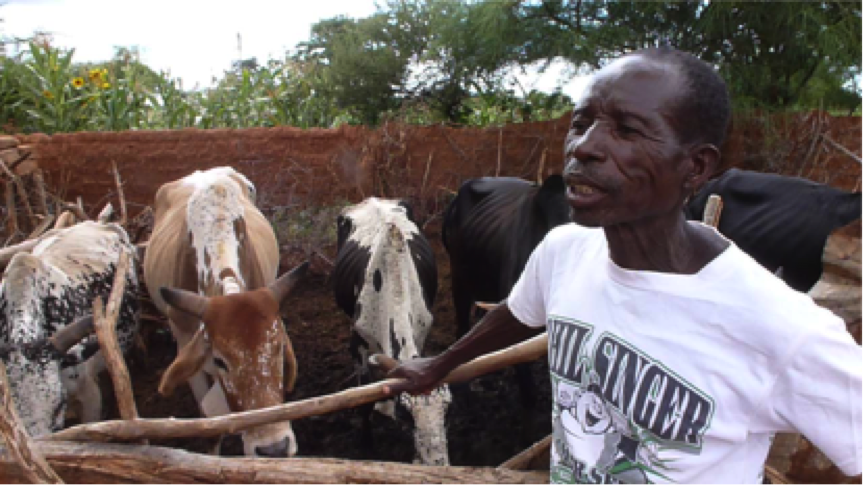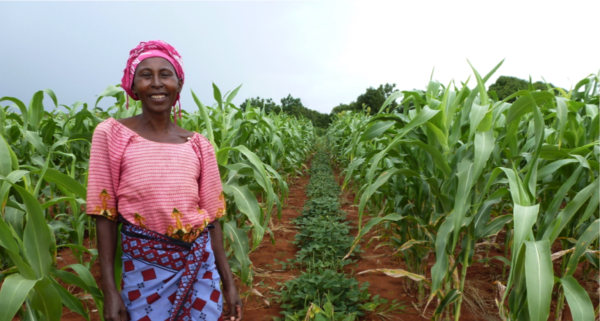Interview with Michael Farrelly
Chololo Ecovillage
Location: Tanzania
“If 70 percent of your population is dependent on rain-fed agriculture, then climate change is a big issue”.
With a masters degree in rural development, Michael Farrelly has brought a knowledge of participatory research methods to the Chololo Ecovillage. By offering villagers a wide range of climate-resilient techniques to improve their food production and incomes, and then carefully testing the results,
Chololo’s first round tallied an impressive series of gains—including doubling or tripling farmers’ outputs and increasing the incomes of women by about 60 percent. The project recently received a second round of funding.
The origins of the Chololo Ecovillage couldn’t have been more modest. The Tanzania Organic Agriculture Movement, a nonprofit that advocates for sustainable agriculture, had a small organic hibiscus project in the arid Dodoma region. While working on that project and others like it, programme manager Michael Farrelly noticed the severity of the impacts climate changewas already having on people. “If 70 percent of your population is dependent on rain-fed agriculture,” he says, “then climate change is a big issue”.
Then, the European Union’s Global Climate Change Alliance launched a call for proposals to strengthen Tanzanians’ climate resilience. Farrelly saw an opportunity, and helped put together a consortium of six organisations—including a university, a forest conservation group, and the local government—that together applied to create an ecovillage not far from the original hibiscus farm. Their application was one of three successful ones, and in 2011 the ecovillage received more than US$770,000 in funding.

The group used that money primarily to educate local people about known best practices for climate-resilient farming, as well as to conduct a series of experiments to uncover new ones. Farmers learned that they could increase yields and improve nutrition by “intercropping”—that is, planting different crops in alternating rows. And, despite being told all their lives to plant spring crops just after the first rain, they learned to wait three or four weeks later, so that the intermittent dry spells brought by climate change wouldn’t kill young seedlings. Meanwhile several of the new income-generating activities they tried out—especially ones controlled by women such as raising chickens and fashioning sandals out of leather—were successful and widely adopted. These new micro-businesses enhance climate resilience because they do not depend directly on rain.
Five years later, the impacts of the project include more a reliable local food supply. “In times of serious drought—we’ve had two—the villages where we are working are much better equipped than the neighboring villages,” Farrelly says.
The project has been especially beneficial for women’s incomes, which Farrelly says increased by more than 60 percent over a two-year period. That’s given women more resources to invest in their children’s nutrition and education, but it’s also given them new independence. “What we hear time and time again from women is that their increased incomes have taken heat off their husbands. They say, ’I don’t have to ask him for money to send the children to school’”.

Chololo Ecovillage also experimented with about 20 technologies. Some of these turned out to be too expensive for the low-income villagers. Biogas processors, for example, eliminated the need for fuel. But at nearly US$1,000 each, they were out of reach for all but the wealthiest villagers. Fuel-efficient stoves that cut wood use in half, however, were affordable to nearly everyone. The team also replaced an aging diesel-fueled water pump with a solar-powered one.
If done right, Farrelly says, relying on education rather than technology can get more done with less. “The more effective approaches are farmer-to- farmer learning,” Farrelly points out. That can mean setting up a demonstration plot and inviting local farmers to meet there on a regular basis to learn. Or it can be a group of farmers that meets regularly at one of their farms, to learn from one another. His team also takes the farmers who were “early adopters” in Chololo to neighboring villages, where they explain the benefits of new techniques in their own terms.
Some of the main challenges the project encountered stemmed from local politics and culture. In one case, a farmer who had gained wealth after adopting scientific farming techniques was accused of witchcraft by older men in the village. “The witch doctors blocked the entrance to the road with stones and said ‘No one’s coming in or out until we solve this witchcraft,’” Farrelly recalls. In other case, a member of the ruling political party became angry when the opposition party came to power locally. He then dismantled the solar water pump, which had been installed under the ruling party.
Chololo Ecovillage was able to navigate both of these complex situations because the local governmental authority was a partner in the project, and stepped in to resolve the conflicts. “We don’t go into a village without first having talked to local authorities and local government,” Farrelly says. “You can’t just walk up to a village and start doing stuff”.
Chololo Ecovillage is widely seen as a success, and in 2015 received a second, larger round of funding from the Global Climate Change Alliance. This time, the group received about US$2.2 million for a four and a half year period. The second round, Chololo 2.0, will involve bringing the most successful techniques from the first round to a wider range of villages. It will also include an installing one of two kinds of solar-power units in about 200 homes, and learning from the results.
In five to 10 years, Farrelly hopes that some of the project’s ideas will be widely adopted. “It would hope it to be in a lot more villages. If we’re putting in 3,000 energy-saving stoves, that’s getting close to everybody having one”.
—James Trimarco, Writer and researcher




